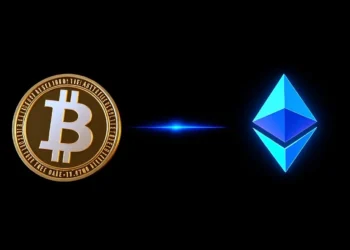Imagine someone trying to spend the same digital dollar twice. Chaos, right? Proof of Work (PoW) is a system that stops this. It makes sure everyone agrees on which transactions are real.
Proof of Work is how a lot of cryptocurrencies make sure everything is legit. It’s how they achieve agreement across many computers. It also stops people from cheating the system by double-spending.
Understanding PoW is important if you want to get into cryptocurrencies. It is also important if you want to get into blockchain tech. It is a key part of how these systems work.
What is Proof of Work and How Does it Work?
PoW is like a tough puzzle that computers have to solve. The first one to solve it gets to add a new bunch of transactions (a “block”) to the blockchain. This work proves they’re honest. It also secures the network.
The Basic Concept of Mining
Think of “mining” like digging for digital gold. Miners use powerful computers. These computers solve complex math problems. When a miner solves one, they get to create a new block. They also get rewarded with cryptocurrency. This encourages them to keep the network secure.
The Hashing Process Explained
Hashing is like a digital fingerprint. It takes data and turns it into a unique code. Miners try different inputs until the hash matches a target. It’s like guessing the right combination to a lock, but with supercomputers. This hunt for the right hash requires a lot of computing power.
Adjusting Difficulty and Block Time
The puzzle difficulty changes so blocks are added at a steady pace. Bitcoin aims for a new block every 10 minutes. If blocks are created faster, the puzzle gets harder. Slower? It gets easier. This keeps the blockchain consistent.
The Benefits of Proof of Work
PoW has some cool benefits. It is secure. It is also decentralized. Plus, it makes the blockchain hard to mess with.
Security Against Attacks (51% Attack)
A 51% attack is when someone controls more than half the network’s computing power. They could then change transaction history. PoW makes this very expensive. Attacking would require huge amounts of electricity and hardware.
Decentralization and Trustlessness
PoW helps spread the power around. Lots of different miners participate. This means no single person or group controls the network. You don’t have to trust anyone. The math does the talking.
Immutability of the Blockchain
Once a block is added to the chain, changing it is super hard. It would mean redoing all the work from that block onward. This makes the blockchain very secure. It also makes the transaction records unchangeable.
The Drawbacks of Proof of Work
PoW isn’t perfect. It uses a lot of energy. Also, it can be slow sometimes. Plus, some worry that mining could become too centralized.
High Energy Consumption
PoW requires lots of computing power. That means lots of electricity. Some say Bitcoin uses as much energy as a small country! This energy use raises environmental worries.
Scalability Issues
PoW can be slow. Bitcoin can only process a few transactions per second. This can lead to delays and higher fees. Other systems are faster.
The Potential for Centralization
Mining pools combine the power of many miners. They increase their chances of solving blocks. Some worry these pools could become too powerful. If so, the network could become less decentralized.
Real-World Examples of Proof of Work
Lots of cryptocurrencies use PoW to keep things secure. Bitcoin is the most famous. Litecoin is another example.
Bitcoin (BTC)
Bitcoin was the first cryptocurrency to use PoW. It’s still the biggest and most well-known. Bitcoin’s PoW secures billions of dollars. It keeps the network running smoothly.
Litecoin (LTC)
Litecoin is similar to Bitcoin, but faster. It uses a different hashing algorithm. The goal of this algorithm is to make mining more accessible.
Ethereum (ETH) (Historical Context)
Ethereum used to use PoW. It later switched to Proof of Stake (PoS). PoS is designed to be more energy-efficient.
The Future of Proof of Work
PoW is still a hot topic. People are trying to make it more efficient. Others are debating whether PoW or PoS is better.
Innovations in PoW Algorithms
Some researchers are working on new PoW algorithms. These algorithms would use less energy. They would also be more resistant to specialized hardware.
The Debate Between PoW and PoS
PoW and PoS are different ways to secure a blockchain. PoW uses computing power. PoS uses staked coins. Each has its pros and cons. The debate about which is better continues.
The Enduring Relevance of PoW
Despite its problems, PoW is still seen as very secure. Some argue it’s the most proven way to secure a blockchain. It might stick around for a long time.
Conclusion
Proof of Work is a way to secure blockchains. It uses computing power to validate transactions. It has benefits like security and decentralization. However, it also has drawbacks like high energy use. The future of PoW is uncertain. Even so, it remains an important part of the cryptocurrency world.
As blockchain technology evolves, keep learning about different consensus mechanisms. Understand their trade-offs. This will help you navigate the exciting world of crypto.

























